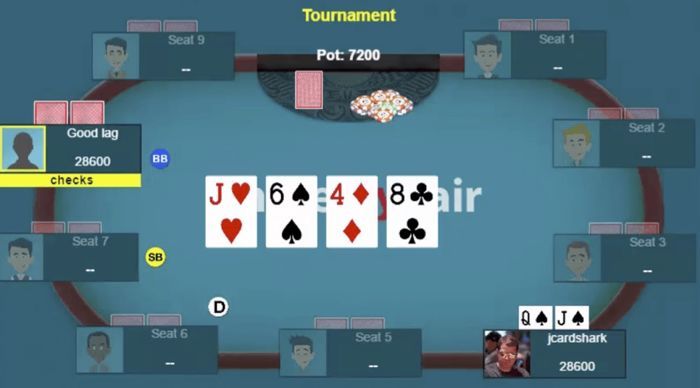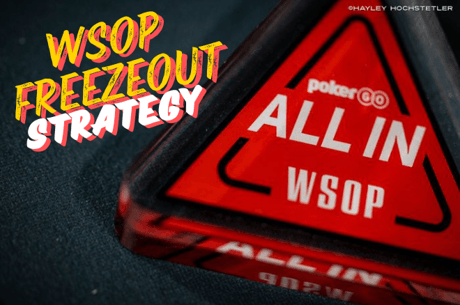Poker Coaching with Jonathan Little: Playing Top Pair

With blinds at 400/800, everyone folded to me in the hijack and I raised to 1,700 out of my 32,000 stack with Q?J?.
There is really no other option in this spot with a 40-big blind stack besides raising. In general, any raise between 2 and 2.75 big blinds is acceptable, although I tend to raise larger as the skill level of the players on the button and big blind increases (because they are the most likely to see the flop).
When you give a strong player excellent pot odds by min-raising, he isn't making much of a mistake by calling with a wide range. But when you give him worse odds by raising larger, he will have a difficult time defending too widely.
This time, I apparently wasn't paying attention, as the player in the big blind was a good, loose, and aggressive player. I would have preferred a raise to about 2,200.
Only the big blind called. The flop came J?6?4?, and the big blind checked.

On dry boards (when there are relatively few possible draws) you can bet smaller with your betting range because the preflop raiser often has an advantage with his entire range.
If you run my entire preflop raising range against my opponent's perceived preflop calling range in a poker equity calculator such as Equilab, you will see that I have about 61 percent equity on this dry board. When that is the case, continuation betting small with nearly your entire range is an enticing option.
As a few more points of reference...
- on a flop of A?7?2?, I would have 61 percent equity
- on a flop of J?10?7?, I would have 56 percent equity
- and on 9?8?7?, I would have 51 percent equity
As the equities get closer together, you should continuation bet less often and for a larger amount.
That said, if the opponent will mindlessly bet the turn and the river if I check behind on the flop, checking with the intention of calling down on any turn and river has merit.
I bet 1,700 and my opponent called. The turn was the 8? and my opponent checked.

When my opponent calls the flop, he clearly has something, although it is difficult to know if it is a strong made hand, a marginal made hand, or a junky draw.
Given the turned 8? doesn't improve many hands, I think this is another somewhat easy value bet because my hand is quite strong and can easily get called by numerous inferior hands. When choosing my bet size, I want to bet an amount that can realistically get called by hands like Jx9x, Ax6x, and 5x4x, which is about 3,400.
I bet 3,400 and my opponent called. The river was the K?, making the board J?6?4?8?K?, and my opponent checked.

What would you do in this situation? Would you check, bet 5,600, bet 7,800, or bet 9,200?
To find out what I think the best play is, and get my full analysis of this hand, check out Poker Coaching.
To get free access to over 100 interactive poker hand quizzes just like this for seven days, with detailed analysis from me after every decision you make, visit Poker Coaching.
Jonathan Little is a professional poker player and author with over $6,500,000 in live tournament earnings. He writes a weekly educational blog and hosts a podcast at JonathanLittlePoker.com. You can follow him on Twitter @JonathanLittle.









